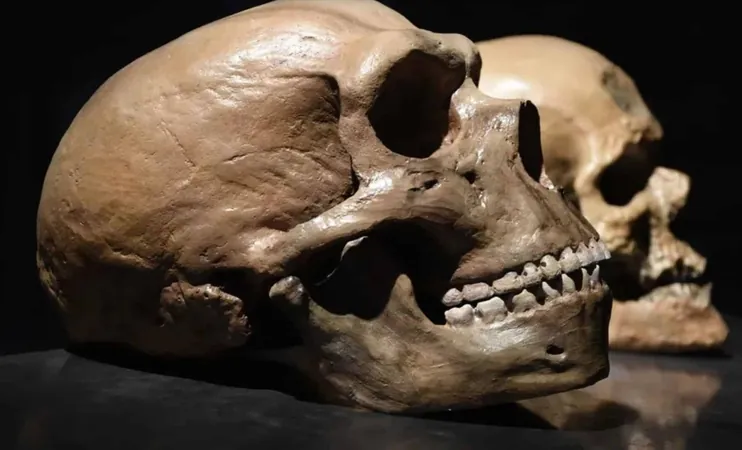
Unlocking the Past: The Location of the First Encounter Between Homo Sapiens and Neanderthals Revealed!
2025-06-16
Author: Chun
A Pioneering Discovery Shakes Our Understanding of Human Evolution
A groundbreaking revelation has surfaced in the study of human evolution, pinpointing the site of the monumental first meeting between Homo sapiens and Neanderthals. Instead of the familiar caves of Europe, researchers have identified the mysterious Zagros Mountains—a rugged and often overlooked area that straddles modern-day Iran, Iraq, and Turkey.
The Zagros Mountains: A Crucial Crossroads
Spanning a vast region, the Zagros Mountains have always played a significant role in ancient human migration. This natural barrier separated the cooler northern climates from the warmer southern regions. During the Pleistocene epoch, roughly 60,000 to 40,000 years ago, it served as a key passage for human beings adapting to shifting climates.
With changing weather patterns, early human populations traveled across this mountainous expanse. Neanderthals, seasoned inhabitants of Europe and Western Asia, moved southeast. Meanwhile, Homo sapiens surged from Africa, pushing northward. It was here, amid the challenges of the Zagros, that their paths converged—a monumental intersection in our evolutionary timeline.
Genetic Insights into Our Shared Heritage
This initial encounter was likely more than a fleeting moment; it appears the two species interbred. Modern genetic analysis reveals that 1% to 4% of the DNA in every non-African human today originates from Neanderthals. This intermingling has profound implications.
Such ancient hybridization has intricately influenced our biology—from immune system responses to pain sensitivity and even our reactions to contemporary challenges like COVID-19. Neanderthal DNA is woven into essential genetic markers that shape our disease susceptibility and physical characteristics.
A Tapestry of Evolution: The Interconnected Lives of Two Species
This new research disrupts the long-accepted notion of isolation between Homo sapiens and Neanderthals. Instead of evolving separately, these ancestral groups shared a rich and intertwined narrative. The Zagros Mountains were not merely a backdrop; they were a vibrant hub for genetic exchange.
Archaeological evidence from numerous sites in the region underscores that these groups didn’t just coexist—they mingled and reproduced, resulting in a significant genetic legacy that informs the DNA of all humans today.
Climate and Geography: The Silent Architects of Human Interaction
The Zagros Mountains were more than a meeting point; their geography and climate paved the way for interaction. During the Pleistocene, this area created an environment conducive to both Neanderthals and Homo sapiens.
The diverse topography, with its range of landscapes and elevations, allowed both species to thrive. The region’s climatic conditions further shaped migration paths, guiding these ancient humans as they adapted to the earth's changing weather.
The findings from the Zagros Mountains not only illuminate our past but also prompt us to reconsider the complex relationships that ultimately shaped who we are today.

 Brasil (PT)
Brasil (PT)
 Canada (EN)
Canada (EN)
 Chile (ES)
Chile (ES)
 Česko (CS)
Česko (CS)
 대한민국 (KO)
대한민국 (KO)
 España (ES)
España (ES)
 France (FR)
France (FR)
 Hong Kong (EN)
Hong Kong (EN)
 Italia (IT)
Italia (IT)
 日本 (JA)
日本 (JA)
 Magyarország (HU)
Magyarország (HU)
 Norge (NO)
Norge (NO)
 Polska (PL)
Polska (PL)
 Schweiz (DE)
Schweiz (DE)
 Singapore (EN)
Singapore (EN)
 Sverige (SV)
Sverige (SV)
 Suomi (FI)
Suomi (FI)
 Türkiye (TR)
Türkiye (TR)
 الإمارات العربية المتحدة (AR)
الإمارات العربية المتحدة (AR)